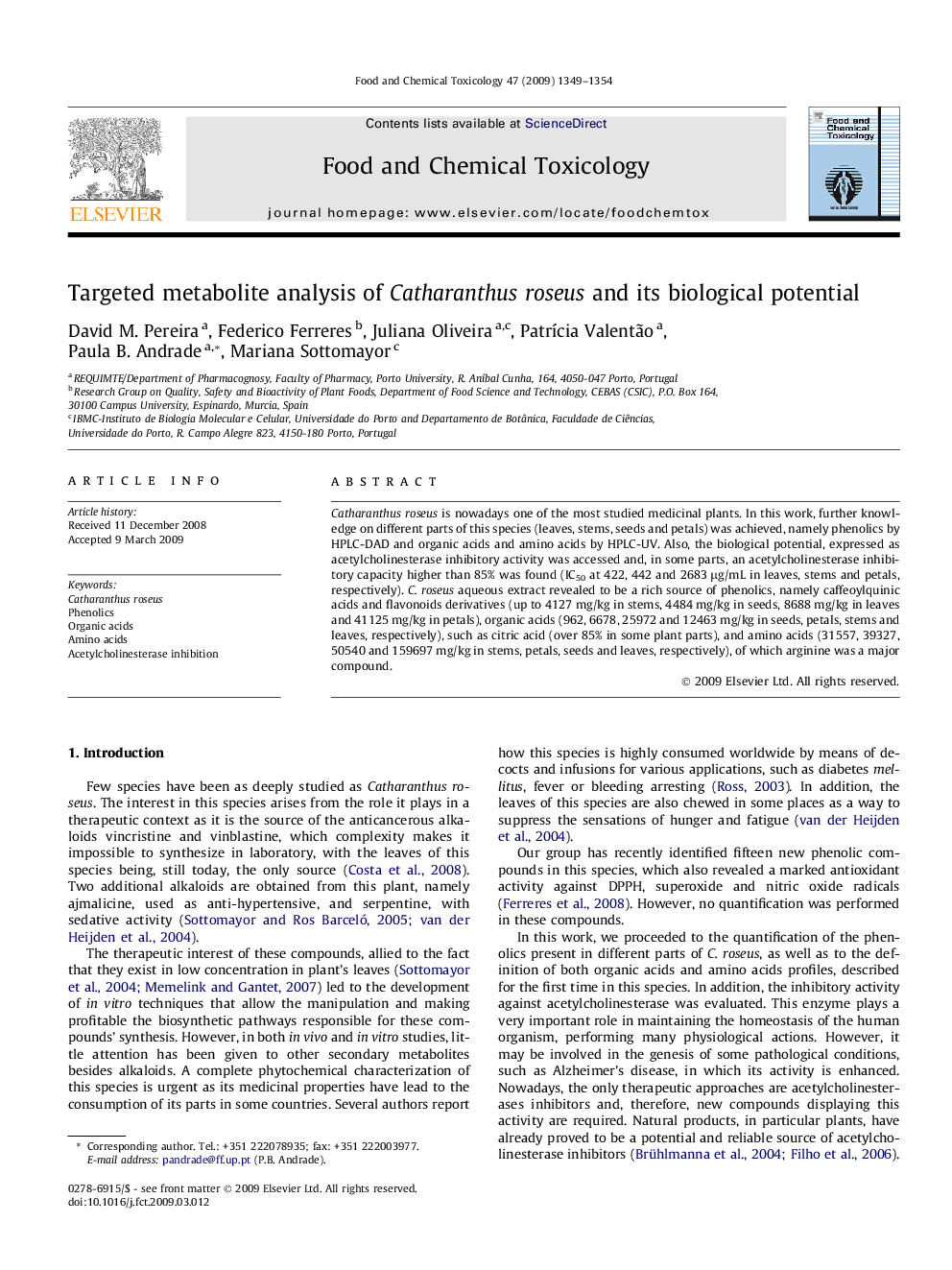| Article ID | Journal | Published Year | Pages | File Type |
|---|---|---|---|---|
| 5854440 | Food and Chemical Toxicology | 2009 | 6 Pages |
Catharanthus roseus is nowadays one of the most studied medicinal plants. In this work, further knowledge on different parts of this species (leaves, stems, seeds and petals) was achieved, namely phenolics by HPLC-DAD and organic acids and amino acids by HPLC-UV. Also, the biological potential, expressed as acetylcholinesterase inhibitory activity was accessed and, in some parts, an acetylcholinesterase inhibitory capacity higher than 85% was found (IC50 at 422, 442 and 2683 μg/mL in leaves, stems and petals, respectively). C. roseus aqueous extract revealed to be a rich source of phenolics, namely caffeoylquinic acids and flavonoids derivatives (up to 4127 mg/kg in stems, 4484 mg/kg in seeds, 8688 mg/kg in leaves and 41125 mg/kg in petals), organic acids (962, 6678, 25972 and 12463 mg/kg in seeds, petals, stems and leaves, respectively), such as citric acid (over 85% in some plant parts), and amino acids (31557, 39327, 50540 and 159697 mg/kg in stems, petals, seeds and leaves, respectively), of which arginine was a major compound.
